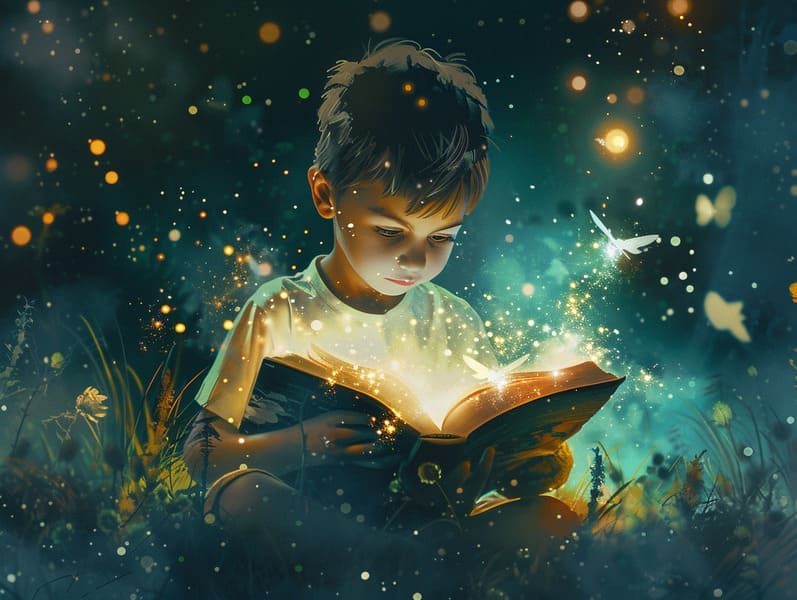
Grimm's fairy tales have enduring presence. These narratives have been whispered from one generation to the next millennia before they were ever documented. They originated from a variety of backgrounds, including African traditions. They were initially told among adults, often carrying themes and messages aligned with the societal norms and beliefs of the time.
The famous Grimm duo, Jacob and Wilhelm, were among the first to compile and publish many of these beloved narratives. Their collection, "Grimm's Folk Tales," included classics like "The True Bride," "Little Brother and Little Sister," and "Snow White," which have since become essentials in the world of famous fairy tales. Similarly, H. C. Andersen's delightful fairy tales, such as "The Mermaid's Tale," and "The Ugly Duckling," have won hearts worldwide, solidifying their place in the pantheon of beloved fairy tales.
Even though they are old, these tales remain as impactful as ever, especially as kids' bedtime tales. These fantastical tales are now available in many formats, including vibrantly illustrated books, captivating animations, and web-based fairy tales.
Their persistent charm can be connected to several enchanting factors:
Life Lessons: Old fairy tales often teach important moral lessons. Stories like "The Tale of the Boy Who Cried Wolf" teach the merit of being truthful, while "The Story of the Tortoise and the Hare" highlight the merits of steadfastness and meekness. These stories offer kids clear distinctions between virtue and vice, shaping their moral compass in a subtle yet profound way.
Kindness and Comprehension: Classic fairy tales frequently showcase protagonists facing challenges and struggles, inciting readers to empathize with their struggles and rally behind their triumphs. For instance, "Beauty's Beast" demonstrates the value of looking beyond appearances to recognize the inner being of a character, advancing sympathy and knowledge.
Cultural Knowledge: Many ancient fairy tales are infused with the cultural contexts from which they bloomed. Immersing in these stories can provide informative snapshots into different customs, advancing a sense of world awareness and recognition.
Creativity and Imagination: The magical elements in ancient fairy tales—supernatural elements—unleash children’s fantastical thinking. These narratives carry readers to enchanted realms, promoting fantasy-filled thoughts and a sense of awe that continues a lifetime.
Ancient fairy tales are not only enchanting but also didactic. They act as fascinating tools in promoting various cognitive and emotional skills in kids. When ancient fairy tales are recited, they boost language development by showing new terms and detailed sentence structures. This practice also fosters auditory perception and attention span, as kids remain attentive, eager to see what happens next.
Furthermore, examining the themes and characters of ancient fairy tales can develop intellectual skills and intellectual skills. Kids are instructed to see patterns, forecast, and figure out cause and effect. These analyses also ease little ones articulate their thoughts and feelings, cultivating their emotional intelligence.
In today’s information age, the accessibility of digital fairy tales has made these tales more within reach than ever. Internet resources and software provide huge assortments of old fairy tales that can be enjoyed check here or listened on anytime, anywhere. Fairy tales voiced are particularly popular, making available an delightful method for young readers to appreciate these delightful tales. Spoken stories and spoken videos lead characters and settings to life, often paired with charming musical scores and harmonies that raise the tale journey.
The everlasting appeal of timeless fairy tales lies in their ability to change to modern days while keeping hold of their underlying messages. Contemporary updates of these narratives often incorporate more representative characters and modern settings, making them familiar to today’s audience. However, the core values of courage, understanding, and righteousness remain unchanged, continuing to touch audiences of all ages.
Fairy tales also offer a sense of peace and predictability. They put forth a well-arranged narrative with a obvious beginning, middle, and end, often closing with the settlement of conflicts and the triumph of good over bad. This dependability can be encouraging for kids, extending a sense of unwaveringness in an unpredictable world.
Traditional fairy tales continue to spellbind and teach new generations, maintaining their enchantment and applicability in modern society. As nighttime stories for kids, they grant a perfect blend of charm and enlightenment, cultivating moral values, empathy, and creativity. The existence of online storybooks and the well-received status of fairy tales recited make sure that these timeless tales remain reachable to new generations.
By defending and spreading these narratives, we continue to praise the rich tapestry of tradition and cultural heritage. Whether you are accessing a colorful picture book, enjoying a digital library, or hearing an narrated book, the spell of timeless fairy tales is always within reach. These tales highlight of the ageless effect of fairy tales and its ability to bind us across epochs and places.
Even if you are experiencing a richly illustrated book, viewing a web-based library, or hearing an sound book, the wonder of popular fairy tales is always within reach.
These fairy tales convey of the eternal effect of tales and its ability to hold us together across generations and cultures, making a tie that enchants and educates alike.